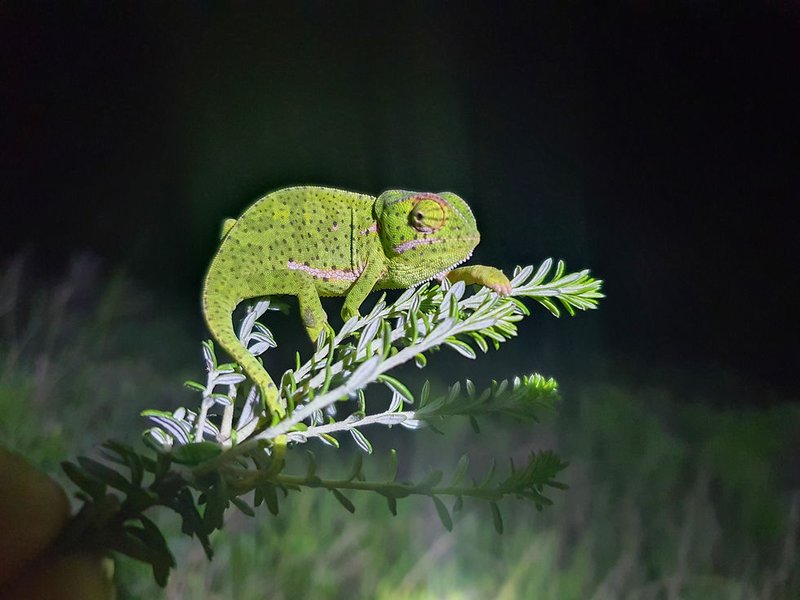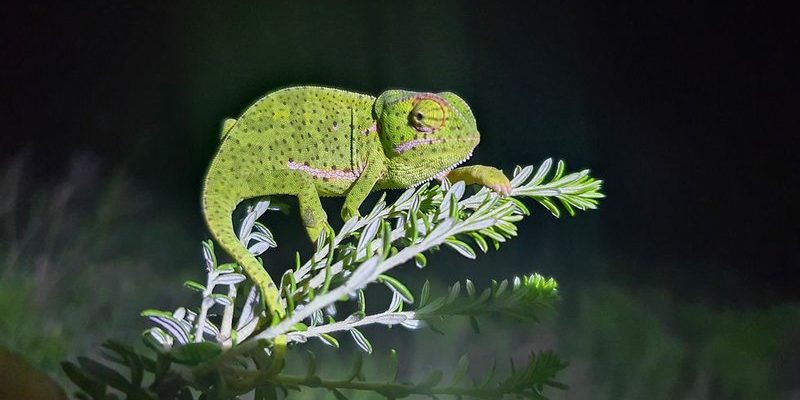
Here’s the thing: flap-necked chameleons, or *Chamaeleo dilepis*, aren’t just your average lizards. They have their own personalities, preferences, and a need for territory. Adding a new reptile to their environment requires careful consideration. Let’s dig deeper into what you need to know about these fascinating chameleons and their potential relationships with other reptiles.
Understanding Flap-Necked Chameleons
Flap-necked chameleons are native to parts of Africa and are celebrated for their ability to change colors and “flap” their neck frills when threatened or excited. They’re typically medium-sized and can grow up to about 12 inches long. Their colors can range from vibrant greens to browns or yellows, depending on their mood or surroundings. The ability to change colors is a remarkable adaptation that helps them blend in and communicate.
These reptiles are primarily solitary creatures. In the wild, they often establish their own territory, making them less inclined to share space with others. Understanding this behavior is key when thinking about introducing them to different types of reptiles or even other chameleons.
Are Flap-Necked Chameleons Territorial?
Absolutely. Flap-necked chameleons are known for being highly territorial. Imagine having a beautiful garden, and someone suddenly tries to move in without asking—how would you feel? That’s how these chameleons react when other reptiles invade their space.
This territorial nature means that keeping more than one flap-necked chameleon together can lead to stress and aggression. They may display hostile behaviors, such as puffing up their necks, changing colors, or even charging at each other. So, if you’re contemplating a multi-chameleon setup, be prepared for some drama!
Coexisting with Other Reptiles: What to Consider
So, how do flap-necked chameleons get along with other reptiles? The answer largely depends on the specific reptiles you have in mind. Generally, it’s not advisable to house flap-necked chameleons with other species, such as skinks or snakes. Each species has its own needs, and the stress from other reptiles can be detrimental.
If you’re determined to create a mixed-species habitat, it’s crucial to do your homework. Some reptiles may have compatible temperaments, while others might see a flap-necked chameleon as a threat or prey. Always consider the other reptile’s size, temperament, and habitat requirements before making any decisions.
Possible Companions: What Works?
While flap-necked chameleons aren’t the easiest reptiles to house with others, there are still some potential companions worth considering. You might be wondering, “What about other species of chameleons?” Here’s the thing: even within their own kind, chameleons can be aggressive. If you’re thinking about introducing a different species or even another flap-necked chameleon, it’s essential to monitor their interactions closely.
In some cases, smaller or more docile lizard species, like anole lizards, can coexist with flap-necked chameleons if you give them plenty of space. Just remember, the larger the space, the better chance they have to avoid confrontations.
Stress Factors: How to Identify Issues
Understanding the signs of stress in your flap-necked chameleon can help you gauge whether introducing new reptiles is a good idea. These signs can include:
- Color Changes: If your chameleon suddenly goes dark or shows aggressive colors, it may be feeling threatened.
- Inactivity: A stressed chameleon might hide more than usual or avoid basking spots.
- Loss of Appetite: If your chameleon stops eating, it’s a clear red flag.
By keeping an eye on these indicators, you can ensure a healthy environment for your reptile friends.
Setting Up a Compatible Living Environment
If you decide to go ahead with a mixed-species setup, creating a suitable environment is key. This means providing plenty of hiding spots and climbing areas for each reptile. Here are some tips for setting up their habitat:
- Enclosure Size: The larger the enclosure, the better. A spacious habitat allows reptiles to stay out of each other’s way.
- Multiple Hiding Spots: Use plants, logs, and rocks to create nooks where reptiles can retreat when feeling overwhelmed.
- Temperature Control: Different species often have varying heat and humidity requirements. Make sure your habitat accommodates all of them.
Creating a comfortable living space can significantly reduce stress levels for all reptiles involved.
In summary, flap-necked chameleons generally prefer to live alone due to their territorial nature. While it’s possible for them to coexist with certain other reptiles under specific conditions, it’s crucial to approach this situation with caution. Understanding their needs, potential stress signs, and the other reptiles’ behaviors is vital in ensuring everyone’s health and happiness.
Always remember, there’s no one-size-fits-all solution when it comes to pet reptiles. Take the time to research, observe, and perhaps even consult a herpetologist before mixing species. Trust your instincts, and always prioritize your flap-necked chameleon’s well-being. After all, a happy chameleon makes for a happy home!

